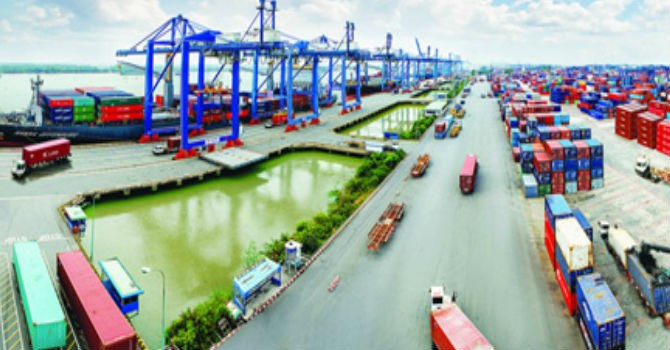Vietnam has been seeing slight GDP growth in recent years. The growth rate was 6.2 percent in 2016 and is forecast to be 6.3 percent this year. 
Standard Chartered has predicted a 6.6 GDP growth rate for Vietnam in 2017, a sign that economic growth would be back to the normal track. It believes that FDI flow would slow down, but still hover around $10 billion.
Meanwhile, Vietnam will not bear big negative impact from the TPP failure.
| Some Vietnamese experts think that the inflation rate in 2017 will be 4.3 percent, while the interest rate policy will remain unchanged and the dong will depreciate slightly. |
Some Vietnamese experts think that the inflation rate in 2017 will be 4.3 percent, while the interest rate policy will remain unchanged and the dong will depreciate slightly.
However, there are too many uncertainties in the world market. Vietnam prepared well for TPP, but the US has withdrawn. Meanwhile, the policies pursued by the US and UK have triggered protectionism in many other countries.
Therefore, WB and ADB both predict a lower GDP growth rate – 6.3 percent – for the Vietnam economy in 2017. The economic growth will continue to be backed by agriculture as it was in 2016.
Nguyen Xuan Thanh from FETP commented that Vietnam will still be able to obtain the 6.7 percent growth rate if it carries out economic reform more effectively, FDI capital continues flowing to Vietnam, the US prime interest rate does not increase sharply and there was no pressure from the sharp devaluation of the Chinese yuan.
Consumption is believed to be the fulcrum for Vietnam’s GDP growth in upcoming years since it makes up 65 percent of GDP. The young population, improved income and the increase of middle-class income earners are expected to help stimulate consumption.
Nevertheless, the final consumption growth is on the decrease: the figure was 5.3 percent only in 2016, a decrease from 10.1 percent in 2015.
The total retail turnover in the first two months of 2017 increased by only 5.6 percent, lower than the 7.6 percent increase in 2016.
Vietnam puts high hopes on investment as another fulcrum for GDP growth. However, investments from private economic sector have been hindered by bank bad debts, while investments from the state hurt by high public debts.
Meanwhile, exports have been growing more slowly with a predicted growth rate of 8 percent in 2017 instead of 9 percent in 2016 because of the negative impact of TPP failure and protectionism in the US and other countries.
There is pressure on inflation as the government plans to raise the fees of essential services, while the crude oil price is expected to increase by 19 percent in 2017 and 3-4 percent in 2018.
Mai Thanh / vietnamnet